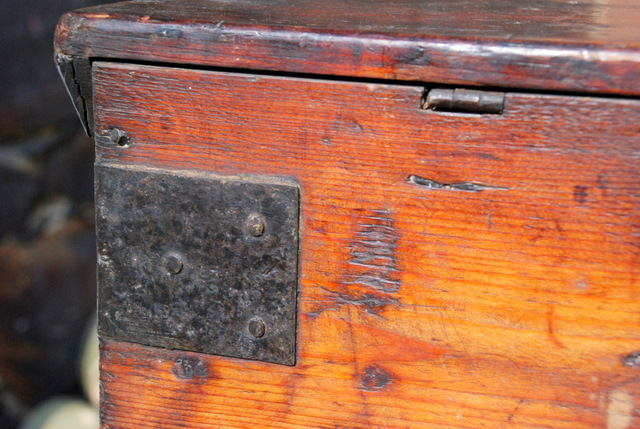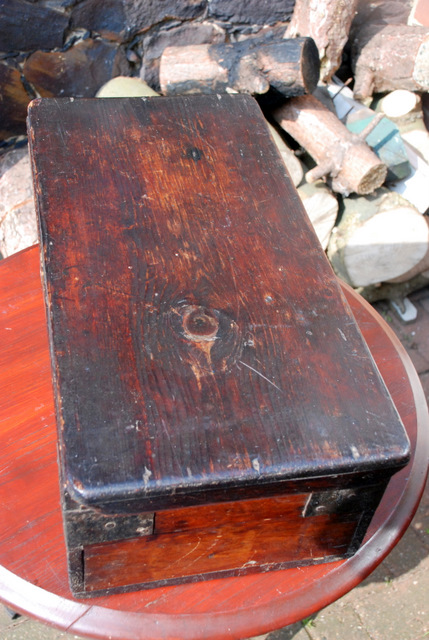jimi43
Established Member
At the bootfair today...apart from some other goodies which I will relate later....I picked up this rather nice old pine box....

I have a feeling it is from the early 1800s but I would like to request the wealth of intelligence here to confirm this....more details:
The hinges are handmade with hand forged nails:

Below all the fascinating labels inside is a date which I think is 1850 but I feel the hinges place it slightly earlier...
Original bracing is intact....

The lock is original and has not been removed as far as I can see...sadly no key...

Finally we see the back of the hinge and another brace...

What do you guys and gals think?
Cheers in anticipation
Jim

I have a feeling it is from the early 1800s but I would like to request the wealth of intelligence here to confirm this....more details:
The hinges are handmade with hand forged nails:

Below all the fascinating labels inside is a date which I think is 1850 but I feel the hinges place it slightly earlier...
Original bracing is intact....

The lock is original and has not been removed as far as I can see...sadly no key...

Finally we see the back of the hinge and another brace...

What do you guys and gals think?
Cheers in anticipation
Jim








































